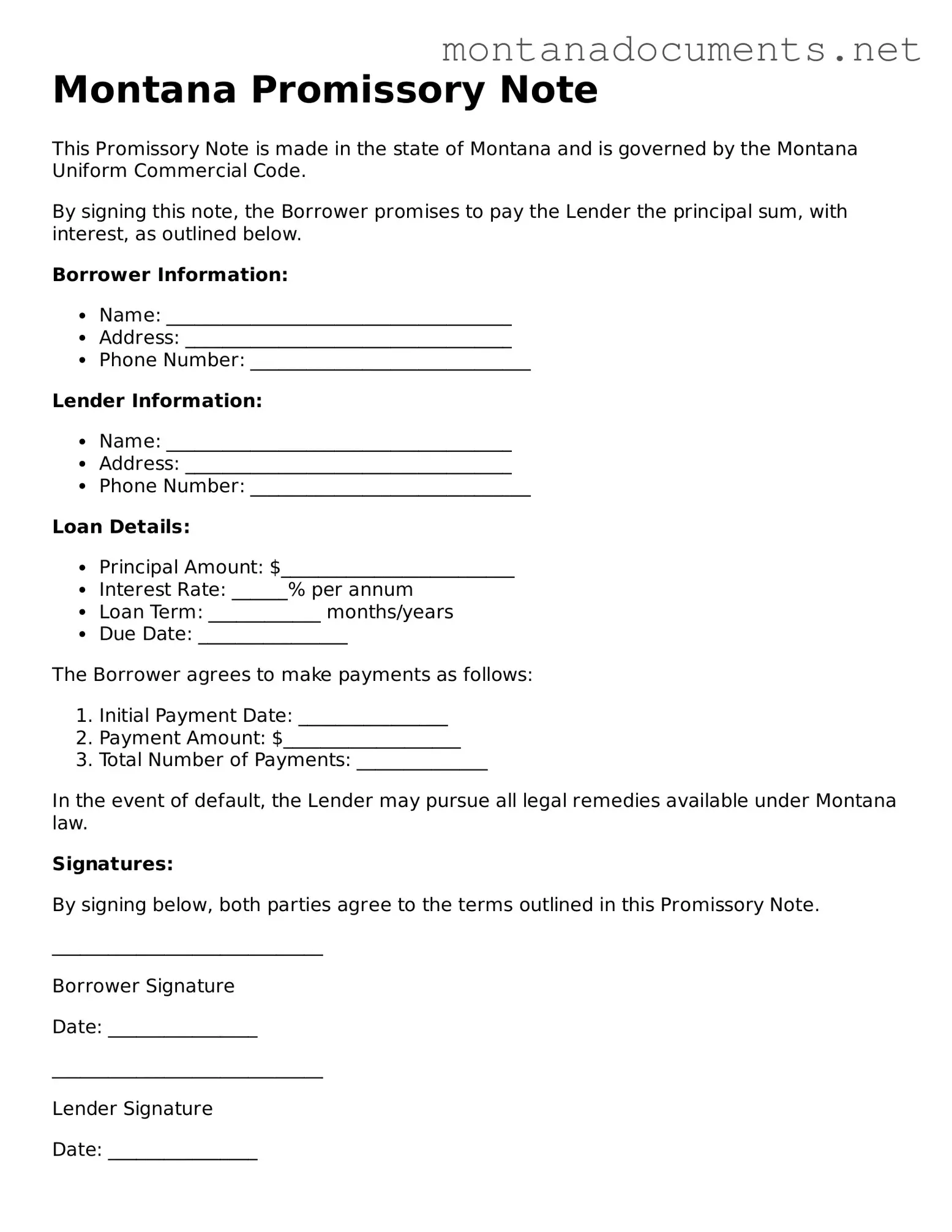Blank Montana Promissory Note Document
A Montana Promissory Note is a legal document that outlines a borrower's promise to repay a specified amount of money to a lender under agreed-upon terms. This form serves as a crucial tool in financial transactions, ensuring both parties understand their obligations. By clearly detailing the repayment schedule, interest rates, and any penalties for default, the note protects the interests of the lender while providing a clear framework for the borrower.
Access This Document Now
